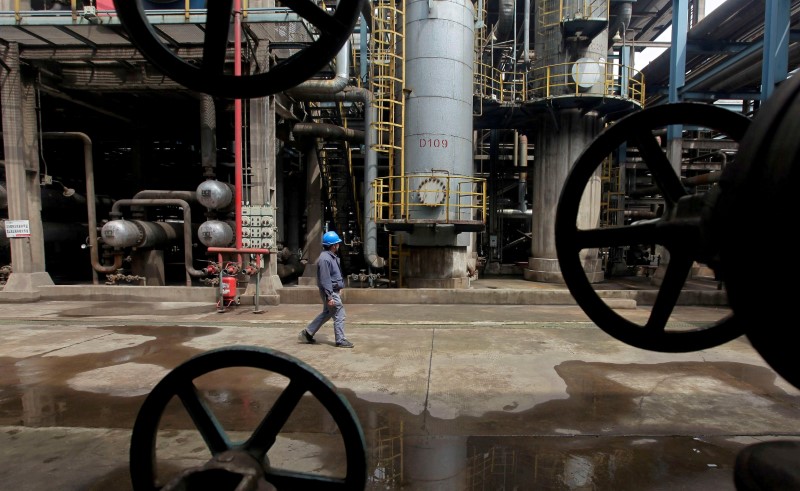By Gina Lee
Investing.com – Oil was down Friday morning in Asia but was set to post solid gains as the week and month wraps up. Fuel demand is growing faster than supply, while vaccination rates dampened the impact of a resurgence in COVID-19 cases globally.
Brent oil futures fell 0.79% to $74.51 by 1:18 AM ET (5:18 AM GMT) after climbing 1.75% on Thursday. WTI futures were down 0.736 to $73.06, whittling down a 1.7% rise.
Both Brent and WTI futures were set for gains of around 2% for the week, over signs of tight crude supplies and strong fuel demand in the U.S., the world’s biggest oil consumer. Both the American Petroleum Institute and the U.S. Energy Information Administration reported a draw in U.S. crude oil supplies, with crude stocks at Cushing at their lowest since January 2020.
Even U.S. jet fuel consumption hit its highest level since March 2020, according to ANZ analysts.
"We've got stronger prices for a bit longer now, because it's a fundamental supply-demand issue in terms of the recovery in demand we're seeing in places like the U.S." Westpac senior economist Justin Smirk told Reuters.
Investors remain concerned about rising numbers of COVID-19 cases in the U.S., Asia and parts of Europe involving the Delta variant of the virus.
However, some said rising COVID-19 vaccination rates could limit the need for harsh restrictive measures that contributed to falling demand in 2020.
"I think the risks of the large shutdowns we saw in 2020 are much lower," said Smirk.
Indian gasoline consumption and industrial production also recorded a rapid rebound following a surge in COVID-19 cases in the country earlier in 2021.
"Yes, the COVID-19 Delta variant is a risk, but is it going to derail demand growth in the second half? We may not see that," Commonwealth Bank commodities analyst Vivek Dhar told Reuters.
Meanwhile, the Organization of the Petroleum Exporting Countries and allies (OPEC+) will start hiking monthly supplies by 400,000 barrels a day beginning in August. The hikes will continue until all OPEC+ production halted thanks to COVID-19 is revived, and it is expected that the market will be able to absorb these additional barrels as demand grows through the second half of 2021.
